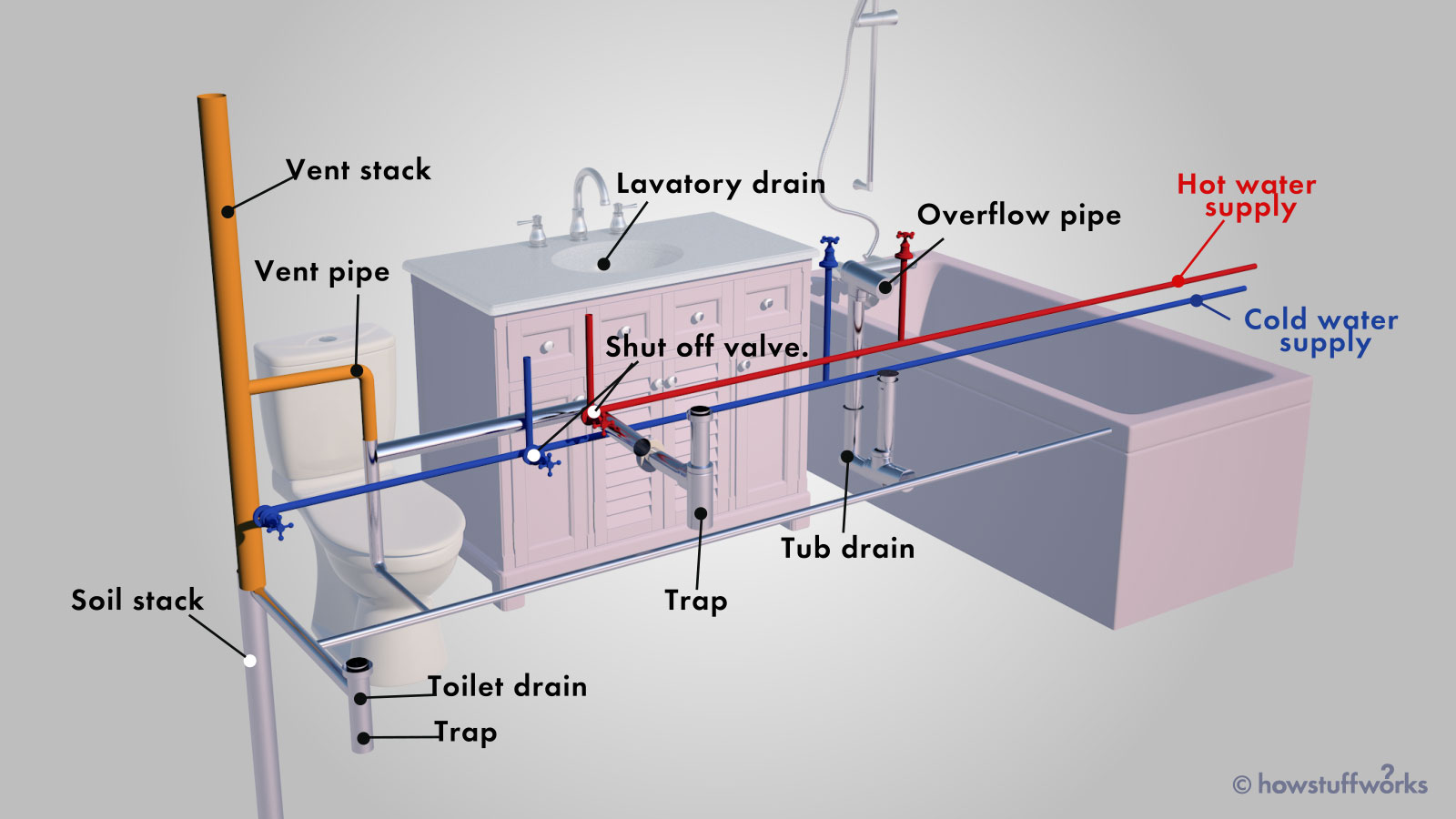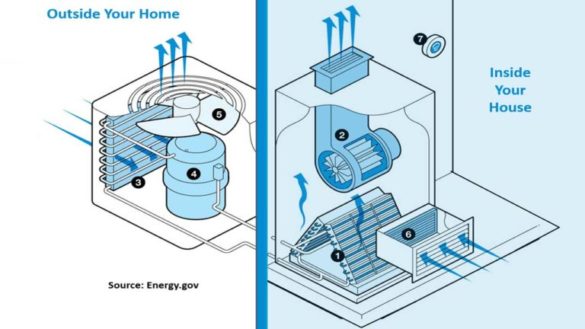Everyone has got his or her own way of thinking about The Inner Workings of Your Home's Plumbing.

Recognizing just how your home's plumbing system functions is essential for each home owner. From delivering clean water for alcohol consumption, food preparation, and bathing to securely getting rid of wastewater, a properly maintained plumbing system is crucial for your household's wellness and convenience. In this detailed guide, we'll check out the elaborate network that composes your home's pipes and deal suggestions on maintenance, upgrades, and managing usual problems.
Intro
Your home's pipes system is greater than simply a network of pipes; it's a complex system that ensures you have accessibility to tidy water and efficient wastewater removal. Understanding its elements and exactly how they interact can aid you avoid expensive repair services and make certain whatever runs efficiently.
Basic Parts of a Plumbing System
Pipelines and Tubes
At the heart of your plumbing system are the pipes and tubing that carry water throughout your home. These can be constructed from different materials such as copper, PVC, or PEX, each with its advantages in terms of longevity and cost-effectiveness.
Components: Sinks, Toilets, Showers, etc.
Components like sinks, bathrooms, showers, and bathtubs are where water is made use of in your home. Comprehending just how these components link to the pipes system aids in identifying problems and planning upgrades.
Shutoffs and Shut-off Points
Valves regulate the circulation of water in your pipes system. Shut-off shutoffs are important during emergency situations or when you need to make repairs, permitting you to separate parts of the system without interrupting water flow to the whole residence.
Water System
Key Water Line
The main water line connects your home to the metropolitan water system or a personal well. It's where water enters your home and is distributed to numerous components.
Water Meter and Pressure Regulatory Authority
The water meter procedures your water usage, while a pressure regulatory authority guarantees that water flows at a risk-free pressure throughout your home's pipes system, avoiding damages to pipes and fixtures.
Cold Water vs. Warm water Lines
Understanding the difference in between cold water lines, which supply water directly from the primary, and hot water lines, which carry warmed water from the hot water heater, helps in fixing and preparing for upgrades.
Water drainage System
Drain Pipes Piping and Traps
Drain pipes carry wastewater far from sinks, showers, and toilets to the sewer or sewage-disposal tank. Traps stop drain gases from entering your home and also trap debris that can trigger obstructions.
Air flow Pipelines
Ventilation pipelines allow air into the drainage system, protecting against suction that could reduce drain and create traps to vacant. Correct air flow is important for keeping the stability of your pipes system.
Value of Proper Drain
Ensuring appropriate drain protects against backups and water damages. Routinely cleansing drains and preserving traps can stop costly repair work and expand the life of your pipes system.
Water Heating System
Types of Water Heaters
Water heaters can be tankless or conventional tank-style. Tankless heaters heat water as needed, while containers keep warmed water for immediate use.
Upgrading Your Pipes System
Factors for Upgrading
Upgrading to water-efficient components or replacing old pipes can enhance water high quality, minimize water costs, and increase the value of your home.
Modern Pipes Technologies and Their Advantages
Discover technologies like smart leak detectors, water-saving bathrooms, and energy-efficient water heaters that can conserve cash and reduce environmental impact.
Cost Considerations and ROI
Determine the in advance expenses versus lasting savings when considering plumbing upgrades. Many upgrades pay for themselves through decreased utility expenses and less fixings.
How Water Heaters Link to the Pipes System
Recognizing just how hot water heater attach to both the cold water supply and warm water circulation lines aids in detecting concerns like insufficient hot water or leaks.
Maintenance Tips for Water Heaters
On a regular basis purging your hot water heater to get rid of debris, inspecting the temperature level setups, and checking for leakages can prolong its life expectancy and enhance energy effectiveness.
Typical Plumbing Issues
Leakages and Their Reasons
Leakages can happen because of aging pipes, loose installations, or high water stress. Attending to leaks promptly protects against water damages and mold and mildew growth.
Clogs and Clogs
Clogs in drains pipes and bathrooms are typically caused by flushing non-flushable things or an accumulation of grease and hair. Using drainpipe displays and bearing in mind what decreases your drains can protect against blockages.
Signs of Pipes Issues to Watch For
Low tide stress, slow drains pipes, foul odors, or uncommonly high water bills are indicators of prospective plumbing problems that need to be attended to quickly.
Plumbing Upkeep Tips
Regular Examinations and Checks
Set up yearly pipes assessments to catch concerns early. Seek signs of leaks, rust, or mineral accumulation in taps and showerheads.
DIY Upkeep Tasks
Simple jobs like cleansing faucet aerators, looking for bathroom leakages utilizing color tablet computers, or protecting exposed pipes in cold environments can prevent significant plumbing concerns.
When to Call an Expert Plumber
Know when a plumbing concern needs specialist competence. Attempting complicated fixings without appropriate expertise can lead to even more damage and greater repair costs.
Tips for Reducing Water Use
Easy behaviors like repairing leakages promptly, taking shorter showers, and running full tons of washing and dishes can save water and lower your energy costs.
Eco-Friendly Pipes Options
Consider lasting plumbing materials like bamboo for floor covering, which is durable and eco-friendly, or recycled glass for counter tops.
Emergency situation Readiness
Steps to Take Throughout a Plumbing Emergency situation
Know where your shut-off shutoffs are located and exactly how to turn off the water system in case of a ruptured pipe or significant leak.
Value of Having Emergency Situation Calls Convenient
Keep get in touch with details for neighborhood plumbings or emergency solutions easily offered for fast response during a plumbing crisis.
Environmental Effect and Preservation
Water-Saving Fixtures and Home Appliances
Mounting low-flow taps, showerheads, and commodes can significantly reduce water usage without sacrificing performance.
DIY Emergency Fixes (When Appropriate).
Short-term repairs like utilizing duct tape to patch a dripping pipeline or putting a container under a leaking faucet can reduce damage until a specialist plumber arrives.
Conclusion.
Recognizing the makeup of your home's pipes system equips you to preserve it efficiently, saving money and time on fixings. By adhering to routine maintenance routines and remaining educated about modern pipes modern technologies, you can guarantee your plumbing system operates successfully for several years ahead.
HOW YOUR PLUMBING SYSTEM WORKS
Which Pipes Do What?
Blue lines = fresh water supply entering the building Red lines = hot water supply entering the building Grey lines = pipes carrying waste away from the building and venting pipes carrying gases away from the building (through the roof) YOUR MAIN PLUMBING SYSTEMS
There are two main plumbing systems that support your home s basic plumbing needs one that brings clean water into your home, and one that sends dirty water away from your home. Connected to the toilet, bath, shower, and other faucets in your home, these two systems keep your water flowing in the right directions.
ACCESSING FRESH WATER
Fresh and clean water is brought into your home through the main water supply line . Filtered through one pipe, this water is pressured to flow into the various fixtures in your home at any given time.
This water can be sourced from a well located on your property, a pond or river (mostly cottages), or, as in most cases, from the city s municipal water treatment centre. However, it is important to note that water that is untreated, such as the water siphoned from ponds or rivers, may not be safe to drink. Personal water supplies always need to be treated for hardness and contaminants before consumed.
MUNICIPAL WATER SUPPLIES
Improve taste and odour Remove sediment Eliminate hardness Reduce chlorine COLD WATER SUPPLY VS. HOT WATER SUPPLY
Cold water flows into your home or building through the service line, which then distributes hot or cold water to your fixtures. This line is most commonly run through a central column that runs floor to floor. Hot water runs in short and straight pipes as the longer the pipeline, the more heat that will be lost in the transfer. Having shorter pipes also allows residents to access hot water more quickly.
WASTE WATER SYSTEM
Your wastewater system is divided into two parts pipes that send wastewater away from your home and venting pipes that send sewer gas away from your home. Sewage water travels through pipes that flush the water and waste towards local sewers that are operated and managed by your city or town. Most sewer systems rely on gravity to move the wastewater to where it needs to go.
The further away from your toilet or sink, the larger wastewater pipes become. This allows for waste to be disposed of from various parts of your home or business at once without pipe blockages. The angle and flow of these pipes are also essential for keeping your waste pipes clear of build up.
https://harrisplumbing.ca/how-your-home-plumbing-system-works/

We were made aware of that write-up about Plumbing Installation 101: All You Need to Know from an associate on a different site. Sharing is caring. Helping people is fun. Thanks a lot for taking the time to read it.
Click For More Information